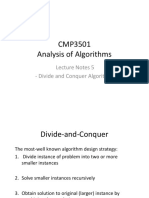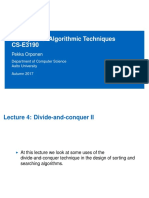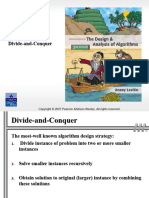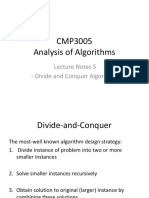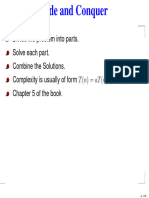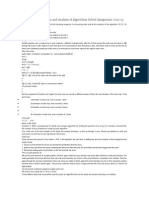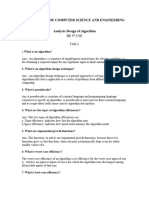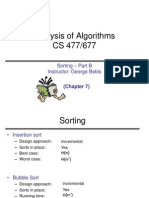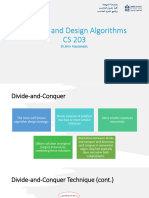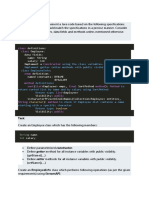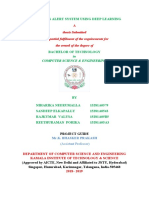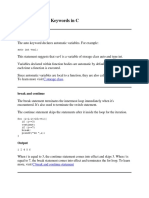0% found this document useful (0 votes)
19 views66 pagesLecture 04
The lecture discusses randomized algorithms, focusing on their characteristics and applications, including the matrix product checker and quicksort. Randomized algorithms can be categorized into Las Vegas and Monte Carlo types, with specific examples demonstrating their efficiency and correctness. Quicksort is highlighted as a practical sorting algorithm that employs a divide-and-conquer strategy, with its performance analyzed in terms of worst-case scenarios.
Uploaded by
benno0810Copyright
© © All Rights Reserved
We take content rights seriously. If you suspect this is your content, claim it here.
Available Formats
Download as PDF, TXT or read online on Scribd
0% found this document useful (0 votes)
19 views66 pagesLecture 04
The lecture discusses randomized algorithms, focusing on their characteristics and applications, including the matrix product checker and quicksort. Randomized algorithms can be categorized into Las Vegas and Monte Carlo types, with specific examples demonstrating their efficiency and correctness. Quicksort is highlighted as a practical sorting algorithm that employs a divide-and-conquer strategy, with its performance analyzed in terms of worst-case scenarios.
Uploaded by
benno0810Copyright
© © All Rights Reserved
We take content rights seriously. If you suspect this is your content, claim it here.
Available Formats
Download as PDF, TXT or read online on Scribd
/ 66






